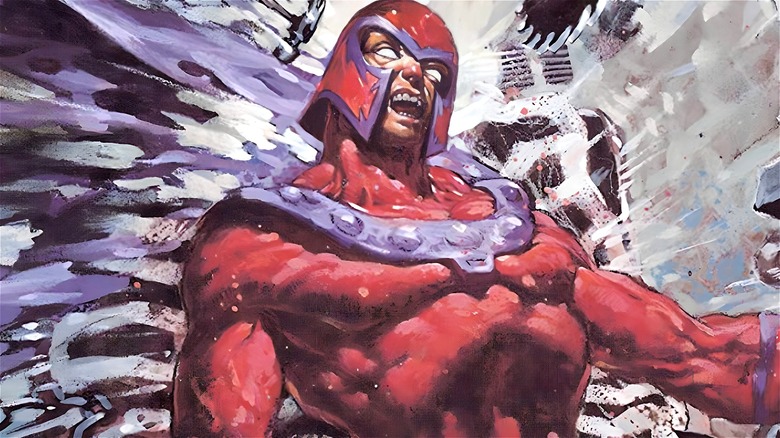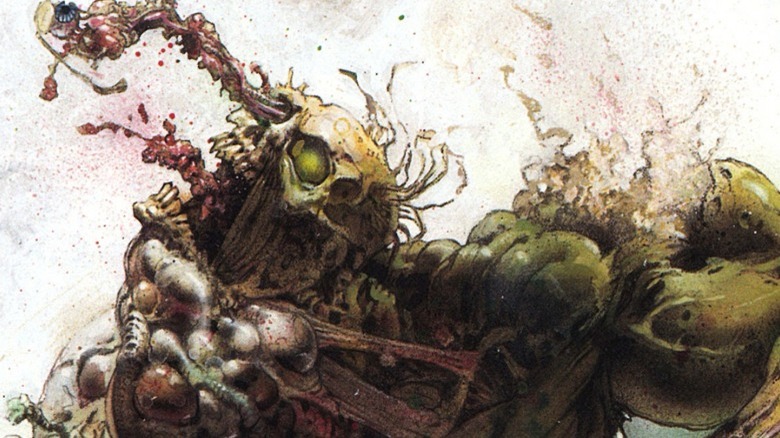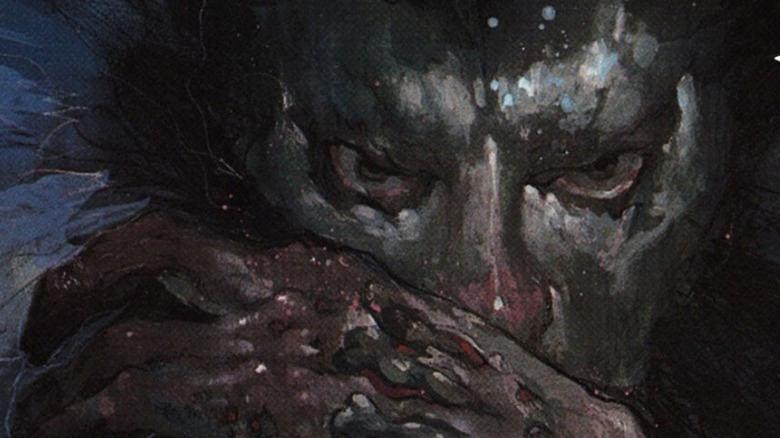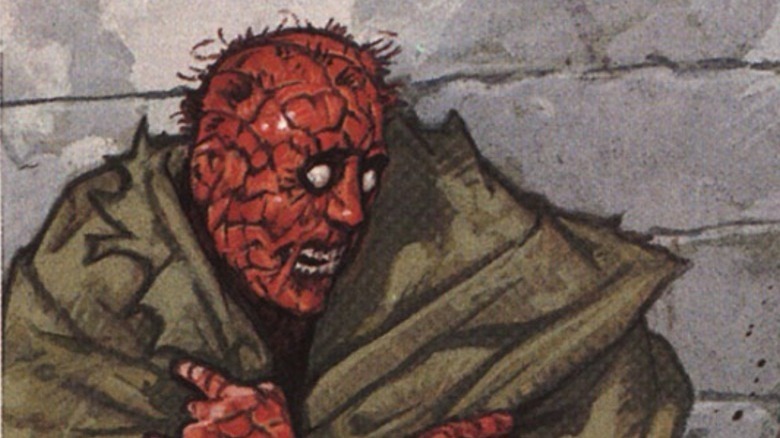Marvel's Darkest Corner Of The Multiverse Is Way Too Grim For The MCU
From relatively lighthearted fare like "Guardians of the Galaxy" and "Spider-Man: Homecoming," to horror-tinged offerings like "Werewolf By Night" and "Doctor Strange in the Multiverse of Madness," the Marvel Cinematic Universe has transcended genres, offering something for moviegoers of all ages and tastes. With decades' worth of comics serving as a nearly bottomless well of source material, the MCU can draw from countless stories to adapt to the big screen and craft them to fit whatever tone any particular movie is hoping to achieve.
However, there's one Marvel Comics world so bleak and nightmarish that it will almost certainly never get the big screen treatment. That would be the universe of 1995's "Marvel: Ruins," a two-issue miniseries written by Warren Ellis with art by Terese Nielsen, Cliff Nielsen, and Chris Moeller.
"Ruins" follows photojournalist Phil Sheldon in a version of the Marvel universe where everything (no exaggeration) has gone wrong. Marvel's heroes are at their absolute lowest in "Ruins," and Sheldon is traveling the world working on a book exploring this dystopia's would-be champions. Instead of Earth's Mightiest Heroes, this version of the Avengers is a radical secessionist group. The Fantastic Four die of radiation poisoning on their trip to space. Nick Fury reveals that Captain America introduced him to cannibalism during World War II. That's just a few examples, and it gets worse.
In short, "Ruins" is a decidedly non-PG-13 story. It portrays the absolute worst-case scenario for many of pop culture's most beloved heroes in a way that would turn away almost any casual MCU fan.
The Hulk in Ruins is a cancerous nightmare
Bruce Banner's origin story remains largely unchanged in "Ruins." Moments before an experiment involving a gamma bomb, the intrepid scientist springs into action when he sees that civilian Rick Jones is unwittingly within the blast radius. Bruce still manages to save Rick in "Ruins," however, instead of imbuing Banner with the rage-fueled super strength he's most known for, the gamma explosion instead has a much more gruesome effect. While this Bruce does receive the Hulk's traditional green skin, that's about where the similarities end.
The Hulk in "Ruins" is a gnarled mess of cancerous tumors and viscera. His muscles bulge and pop off his skeleton as he screams in agony. While Bruce himself displays the same heroism as in the mainstream comics and MCU, the end results in "Ruins" look like something out of a David Cronenberg body horror movie. And Bruce isn't alone in being forever changed by that fateful incident.
In the "Ruins" universe, Rick Jones is now a junkie, still wrestling with the events of the day and the horrific aftermath he witnessed. He ends his interview with Sheldon by revealing that he believes whatever is left of Bruce Banner is still alive and being experimented on in a government facility.
The X-Men are desperate, brutalized, and alone
With the X-Men slowly trickling their way into the MCU, it's only a matter of time before audiences get a proper look at the new cinematic lineup of mutant heroes and villains. Hopefully, that lineup won't be inspired by the world of "Ruins."
The comic introduces Wolverine as a shadow of his usual self. He's a barfly, dying of bone disease and hustling drinks off of strangers in dive bars. Meanwhile, Jean Grey is a sex worker who gets gunned down by Nick Fury. Cyclops and Quicksilver are both being held in a secret prison with Kingpin serving as warden, though Cyclops has been blinded and Quicksilver has had his limbs amputated.
Not even villains like Magneto are safe in the "Ruins" world. The story sees him lose control of his powers and unwillingly attract all the metal around him, killing himself and several innocent bystanders. Professor X is actually the president in "Ruins," though his normal philanthropy seems to have fallen by the wayside, replaced with the sort of callousness befitting this world. He's not only aware of the torture being conducted on mutants under Kingpin's watch — he condones it.
Spider-Man is Patient Zero in Ruins
Considering the fact that Peter Parker is normally one of Marvel's more effervescent and lighthearted heroes, the "Ruins" take on Spider-Man is an especially jarring shift in tone. In this world, Peter is responsible for the experiment gone awry that ends with him being bitten by a radioactive spider. But he doesn't gain arachnid-like powers in the "Ruins" universe. Instead, the bite leaves him with a contagious mutant virus that leads to a deadly skin disease. The last time we see Peter Parker in "Ruins," he's seemingly homeless, huddled in a blanket on the street as the virus devastates his body, turning his skin red and cracked in a way that gruesomely mimics Spidey's traditional design.
The tragic retelling of Spider-Man's origin is actually what leads to the miniseries' end. In the final pages, Phil reveals that he'd previously worked at The Daily Bugle, where he would run into Peter Parker. The veteran journalist, referring to Parker as a "contagious little weasel," contracted the strange virus. "Ruins" ends with Phil Sheldon succumbing to the mysterious ailment, never having completed his work.
While the Marvel Cinematic Universe has proven itself to be wildly successful in adapting some of the most epic, weird, or unique stories from throughout comic book history, "Ruins" is proof that some source material is probably best left on the cutting room floor.



